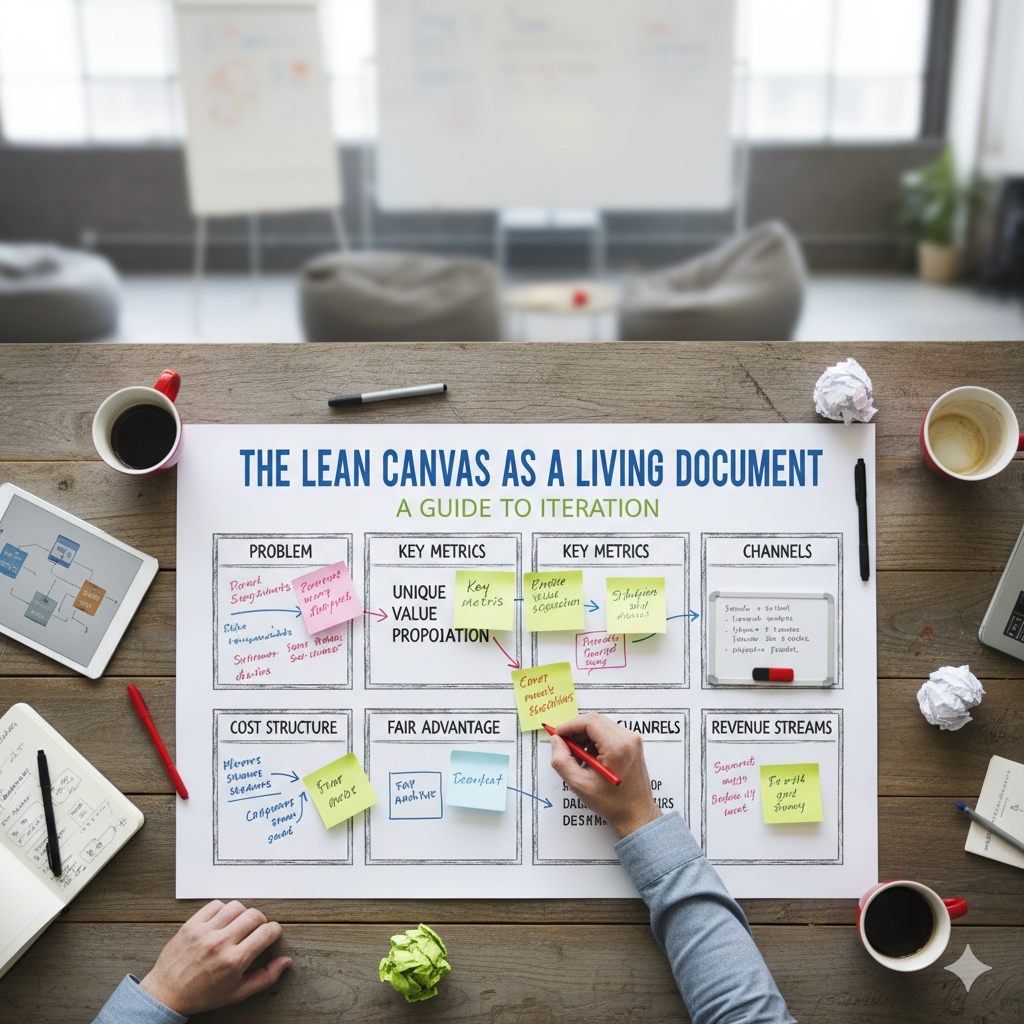The Lean Canvas as a Living Document: A Guide to Iteration
In the world of startups and innovation, the initial business plan is often obsolete the moment it is printed. The market shifts, customer preferences change, and unforeseen challenges arise. In this environment of uncertainty, the most powerful tool is not a static document but a dynamic, evolving guide. This is where the true power of the Lean Canvas is revealed—not as a one-time exercise to be filed away, but as a living document that breathes, adapts, and grows with your venture.
Many entrepreneurs make the critical mistake of treating their Lean Canvas as a final blueprint. They meticulously fill in the nine boxes and consider the planning phase complete. This approach, while well-intentioned, is fundamentally at odds with the principles of lean methodology. A static Lean Canvas is like a snapshot of your assumptions; a living one, however, is a time-lapse video of your journey from hypothesis to validated learning.
From Static Blueprint to Strategic Compass
The core premise of the Lean Startup methodology, which the Lean Canvas operationalizes, is that startups exist in conditions of extreme uncertainty. Your initial canvas is a collection of your best-educated guesses. Consequently, the “Problem” you identified might not be the most pressing one. Similarly, the “Solution” you envisioned might miss the mark entirely.
Therefore, iteration is the non-negotiable engine that drives you from assumption to fact. Without it, you risk building a product nobody wants, a fate far more common than failure due to poor execution. A living Lean Canvas acts as your central repository for this learning, ensuring that every experiment and customer interview is captured and reflected in your strategy.
The Cycle of Iteration: A Three-Step Process
Transforming your canvas into a living document requires a disciplined, cyclical approach. This process systematically converts guesses into knowledge.
Step 1: Capture Your Baseline (The “Guess”)
Begin by creating your first version. Be bold and specific. Clearly state who your customer segments are, the top three problems they face, and your proposed solution. This version is your foundational hypothesis. It’s crucial to date this version and, if possible, save a copy to track your progress over time.
Step 2: Get Out of the Building and Test (The “Experiment”)
Next, use your canvas as a guide for action. Specifically, use it to identify your riskiest assumptions. For each risky box, design a simple, cheap, and fast experiment to test it.
- To test the “Problem” box, conduct customer discovery interviews.
- To test the “Solution” box, create a minimum viable product (MVP).
- To test the “Channels” box, run small-scale ad tests.
The goal is not to prove yourself right, but to learn the truth as quickly as possible.
Step 3: Learn and Pivot or Persevere (The “Update”)
This is the most critical step where the document truly comes to life. After analyzing the data from your experiments, you must decide your next move.
- If you were right: You have validated that part of your business model. As a result, you can persevere and move on to testing the next riskiest assumption.
- If you were wrong: This is not failure; it is invaluable learning. Therefore, you must now update your Lean Canvas to reflect this new reality.
This update is the “iteration.” For instance, a significant change to one box often creates a ripple effect, forcing you to reconsider and update several others. This ensures your entire business model remains internally consistent.
Making Iteration an Organizational Habit
To institutionalize this process, you must make it a routine. Firstly, schedule regular “Canvas Review” sessions with your team. These meetings should be dedicated to asking one question: “Based on what we’ve learned since our last meeting, does our canvas still represent our current best strategy?”
Furthermore, use a large, physical canvas on a wall or a digital whiteboard tool that allows for easy editing. The visual nature of the canvas makes changes—and the rationale behind them—clear to the entire team, ultimately fostering alignment and a shared understanding of the strategic direction.
Conclusion: Embracing the Journey of Discovery
In conclusion, the journey of building a successful venture is not a straight line; it is a winding path of discovery. By treating your Lean Canvas as a living document, you equip yourself with a compass for this journey, not a rigid map to a destination that may not exist. It becomes the single source of truth for your evolving strategy. Ultimately, embrace the messiness of iteration, for within those constant updates lies the path to finding a business model that is not just plausible, but truly sustainable and resilient.

